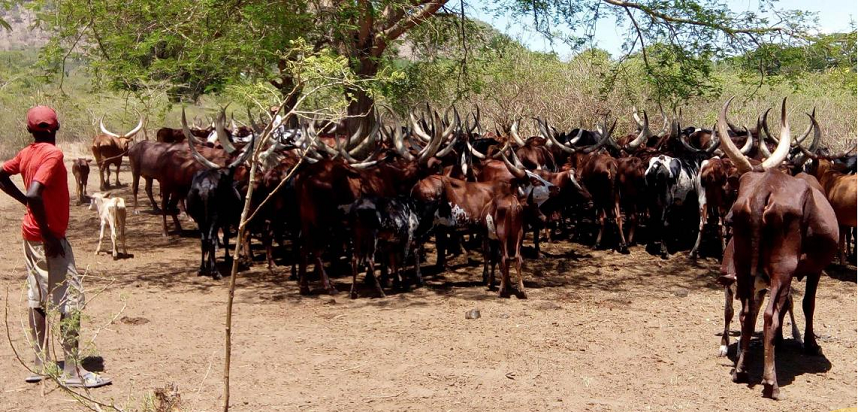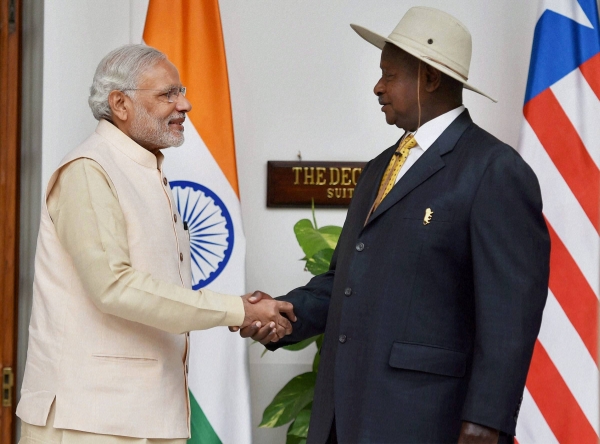Minister for Energy and Mineral Development, Mary Goretti Kitutu presenting her Ministry’s results on NRM manifesto implementation
Government has put in place means to lower electricity tariffs starting with manufacturers to make local goods competitive in regional and global market.
The revelation was made by the Minister for Energy and Mineral Development, Mary Goretti Kitutu while presenting her Ministry’s results in as far NRM manifesto implementation is concerned at OPM Auditorium yesterday.
The Minister said the move to lower power tariffs is being done in a phased approach starting with Extra Large, Large, medium, commercial through to domestic and street lighting customer categories.
She noted that refinancing Bujagali has brought the tariff down to US 8.5 cents from US cents 12.
The target of 5 US Cents has been achieved during off-peak hours for extra-large consumers, Kitutu said.
She added that Government aim is to gradually lower the tariff for individual, residential and social service centres such as schools, and least cost power generation.
Kitutu says when Isimba and Karuma HPP are fully absorbed/utilized, it is expected that the weighted generation tariff will reduce from the current US Cents 6.47/kWh (Ush. 243.43) to US cents 5.34/kWh (Ush.200.93), representing a reduction of 17.45%.
She added that over the last five years, Government has increased the load factor of the power plants hence reducing the tariff by putting in place measures to grow the energy demand.
This has included electrification of industrial parks and implementation of the Free Connection Policy to get more households, businesses and industries consuming electricity Hospitals.
“Government is also expanding the grid network,” she said.
In the last five years, Kitutu said, government commissioned electricity transmission projects totaling to 989km.
These include 137km, 220kV Kawanda – Masaka transmission line, 65km, 220kV Mbara – Mirama transmission line, 226km, 220kV Nkenda (kasese) – Hoima transmission line, 115km, 132kV Lira – Opuyo (Soroti) transmission line, 42km, 132kV Isimba – Bujagali transmission line and 157km, 132kV Mbarara – Nkenda transmission line.
“Government has also commissioned electricity transmission substations with a transformation capacity of 440MVA that include Queen’s way, Masaka, Mbarara North, Hoima, Iganga, Mukono, Namanve, Luzira, Kapeeka and kawanda,” Kitutu said.
She revealed that Karuma substation, Olyiyo substation and Mirama substation are nearing completion.
“The total length of High Voltage grid coverage is now 2,442km up from 1,453 in 2016,” the Minister said.
She revealed that a number of other power transmission projects totaling over 1,300km and associated sub-stations are at various stages of development.
These include among others 132kV Opuyo (lira)-Moroto transmission line, 132kV Tororo – Opuyo transmission line, Karuma Interconnection project and Lira-Gulu-Nebbi-Arua transmission line.
RURAL ELECTRIFICATION
Cumulative Network Line Length of 14,820.45 Km of Medium voltage lines and 10,279.19 Km of Low Voltage lines has been constructed to date, the Minister said.
She added that the target is to achieve additional 2,896.66 Km of Medium voltage lines and 4,219.21 Km of Low Voltage lines.
“All district headquarters have been connected to the National electricity grid except Kotido, Buvuma and Kaabong Districts,” Kitutu said, adding that feasibility study to connect Buvuma District headquarters to the electricity grid was completed. Government is now sourcing funding for work implementation.
She added that Government has secured funding to electrify a total of 620 administrative centres. These include 558 Sub-County headquarters, 52 Town Councils and 10 divisional headquarters.
She noted that Forty five (45) sub-contractors have been approved for the project and twenty (24) of the sub-contractors have already been deployed.
Construction in the remaining districts will commence in 2021.
“A total of 252,460 connections was achieved under the Electricity Connections Policy since 1st November, 2018 when it started implementation,” Kitutu said, adding: “Additional 388,000 connections are marked for implementation.”
A total of 15,000 ready boards have also been completed for the first phase.
Solar
The Minister said Government is promoting use of renewable energy technologies in the Country.
“The Country now has 40MW of solar grid connected systems,” Kitutu said, adding: “Solar water heaters have been installed in various health units across the country.”
She added that Solar crop drying technologies for post-harvest management of high perishable fruits is being piloted in Kangulumira, Kayunga district.
“Government is also constructing a commercial hybrid solar/bio thermal fruit drier at Katwe village, Kikyusa Sub County in Luweero district,” she said.
This, she said, will bring the total number of demonstration sites for commercial fruit drying by government to four (4).
“Solar and wind hybrid system are currently operating and supplying power to the communities of Kacheri in Kotido district, Lokopo community in Napak district, and Lufudu landing site in Namayingo district,” the Minister revealed, adding that these systems are supplying power to households, health centers and schools.
She added that a Wind resource map and pilot wind power are being developed.
Nuclear Power Development
Kitutu said Government continued the promotion and development of nuclear energy for peaceful uses in electricity generation, cancer management, food safety assessment, tsetse fly control, improving agricultural productivity, water resources management and industries.
To this effect, progress is as follows: –
•Technical and economic studies on nuclear energy development were completed.
•A National Radioactive Waste Management Strategy was drafted.
MoU between the Ministry of Energy and Mineral Development and the Russian State Atomic Energy Cooperation on Peaceful uses of Atomic Energy was signed on 19th June 2017.
• The focus of the MoU is on development of nuclear power infrastructure, education and training, nuclear and radiation safety, non-power application of atomic energy, nuclear research centers and design and construction of nuclear power plants.
• MoU between the Ministry of Energy and Mineral Development and China National Nuclear Corporation on nuclear energy development was signed on 11th May 2018 in Beijing, China.
•Nuclear Power Plant Project: A nuclear power roadmap was prepared and stakeholder’s consultative meeting held from 20th – 21st February, 2020. Terms of Reference for Strategic Environmental Assessment were prepared.
• Centre for Nuclear Science and Technology Project: This is aimed at establishing a facility at one of the public Universities in Uganda for nuclear training, research and development.
• The facility will be used in the production of radioisotopes for the Cancer Centres in Uganda and Africa.
• The feasibility studies for the proposed projects are to be conducted with support from IAEA, CNNC of China, ROSATOM of Russia and other development partners.
Plans
Fast tracking RAP implementation and completion of transmission projects
• Completion of Isimba Bridge.
• Airborne geophysical survey of Karamoja starting as soon as lockdown conditions permit
• Opening of new Oil and Gas Exploration Acreages in an effort to increase resource base.
• Construction of infrastructure for oil production and transportation
• UNOC has identified investment projects in which the government can invest and derive revenues in the future.
The Minister said in order to contribute effectively to the national economic recovery, the sector has identified within its policy goals the key areas of focus as follows: –
•Energy resources sub-sector: Focus will be to develop power generation, transmission and distribution infrastructure to support value addition. Promotion of Renewable energy and energy efficiency will also be prioritised.
•Oil and gas sub sector: Emphasis in the will be the achievement of the FID for projects in the Oil and Gas sector and commencement of production.
•Mineral development sub-sector: Complete the airborne geophysical survey of the Karamoja Region, put in place a modern mineral laboratory as well as mineral beneficiation centers in the country, and add value to the mineral reserves being discovered.
Challenges
Land Acquisition for government projects is taking a long time and a considerable budget.
• Vandalism on the transmission lines and other installations
• Activities of Artisanal Miners.
• Lengthy and Protracted negotiations on taking the Final Investment Decisions for projects in the Oil and Gas sector.
• Inadequate financing for development: investment in development projects such as Equity contribution in oil and gas investment projects
• The private sector is reluctant to invest in power generation projects as they require guarantees from Government like Escrow Accounts and Sovereign Guarantees.
By Francis Otucu





